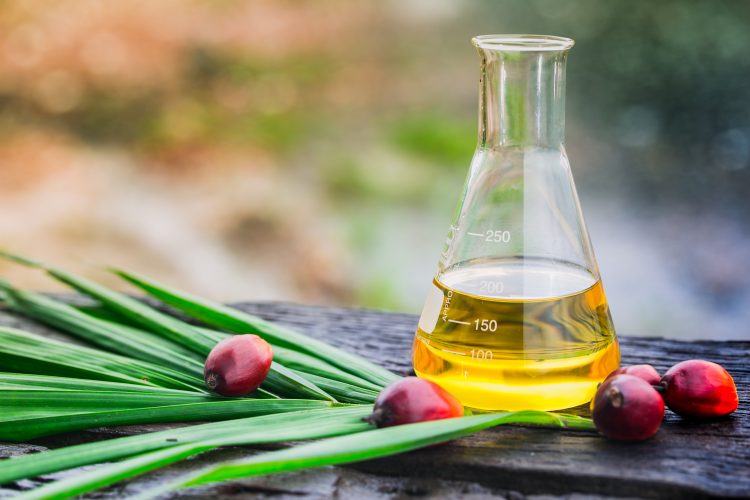Palm oil – an edible oil case study in quality, safety and process monitoring
- Like
- Digg
- Del
- Tumblr
- VKontakte
- Buffer
- Love This
- Odnoklassniki
- Meneame
- Blogger
- Amazon
- Yahoo Mail
- Gmail
- AOL
- Newsvine
- HackerNews
- Evernote
- MySpace
- Mail.ru
- Viadeo
- Line
- Comments
- Yummly
- SMS
- Viber
- Telegram
- Subscribe
- Skype
- Facebook Messenger
- Kakao
- LiveJournal
- Yammer
- Edgar
- Fintel
- Mix
- Instapaper
- Copy Link
Posted: 28 June 2021 | New Food Magazine | No comments yet
Experts from Analytik Jena recently discussed techniques for edible oil analysis by means of elemental analysis, atomic spectrometry and UV/Vis spectroscopy. Here are the webinar highlights…


In a webinar hosted by New Food, Sebastian Wünscher, Product Manager for ICP-OES, and Francisco Escobar, Product Manager for Molecular Spectroscopy at Analytik Jena, discussed a series of quality and food safety parameters, as well as process efficiency indicators, for edible oils, using the example of palm oil for illustration.
Techniques for highly efficient analysis
Numerous analysis tasks are performed at various stages in the value chain of palm oil to monitor safety, quality and process parameters, and this can be challenging.
The value chain of vegetable oils starts with the cultivation and harvest of oil‑rich produce such as oil palm bunches, rapeseed, olives or soy.
Processing, meaning the extraction of the crude oils from the seeds, is often performed directly in the producing regions by milling methods. In the subsequent refining process, the physical and chemical properties of the oils are altered. Sub‑process steps involve de-gumming, neutralisation, washing, bleaching, deodorisation and fractionation. Herein impurities are removed (free-fatty acids, dyes and odours).
Glycerolysis, interesterification or hydrogenation are often employed to achieve the desired product properties. Non-refined oils are available as (extra) virgin oils, whereas refined oils are the main components of final food product manufacturing. Each of these steps require stringent monitoring to comply with food safety regulations and quality claims but also to achieve high process efficiency.
Higher efficiency for chlorine determination
Combustion elemental analysis is becoming an increasingly popular analytical tool to efficiently monitor chlorine contents as a potential risk parameter. As a consequence of the elevated temperatures during the refining process, chlorine and palm oil fatty acid esters act as precursors of 3-MCPD, a potential cancerogenic agent. This is a consequence of the elevated temperatures during the refining process. Therefore, early-stage chlorine process monitoring provides a key food safety advantage.
A highly reliable solution for measuring chlorine content is the multi EA 5100 C/N/S/Cl analyser. It provides an efficient methodology to monitor feedstocks (crude palm oil) as well as intermediate refining products (red and white palm oil). The multi EA 5100 detects organic, as well as inorganic chlorine contents, to ensure product safety and meet regulations.
Reliable trace element analysis in edible oils
For the assessment of trace element contents in edible oils, ICP-OES is a reliable and efficient technique. Modern ICP‑OES systems, such as the PlasmaQuant 9100 by Analytik Jena, contribute to food safety analysis, quality control and the monitoring of process parameters. It is a suitable technique to determine the levels of toxic heavy metals, including mercury, lead, arsenic and cadmium, or elements with degenerative effects on oil products’ taste or shelf life.
As a multi-element analytical tool, ICP-OES also provides information on the levels of elements that perturb the refining process, such as P and Na, and therefore, contributes to the feedstock control as well as process monitoring of edible oil refining plants.
Quality assessments on a molecular level
UV/Vis spectroscopy allows a reliable quality assessment at a molecular level. This technique excels at the rapid quality evaluation of raw materials (crude palm oil) and in monitoring refinement and further processing intermediates, such as bleached palm oil. This method requires reduced sample preparation steps while simultaneously providing key quality insight.
The most prominent parameter is the Deterioration of Bleachability Index (DOBI), which allows (crude) palm oil quality assessment, as specified in the ISO 17932:2011 standard. Here, the initial carotene absorption at a specific wavelength and the corresponding ratio to the characteristic absorption of secondary degradation products leverage the carotene content in palm oil and the quality grade, respectively.
High-performance UV/Vis solutions like the SPECORD PLUS series by Analytik Jena allow carotene detection at a very low concentration range, while at the same time, providing optional high‑sample throughput.
Want to learn more about edible oil analysis?
Watch Analytik Jena’s webinar on-demand here
Related topics
chromatography, Fats & oils, Food Safety, Liquid chromatography–mass spectrometry (LC-MS), Quality analysis & quality control (QA/QC), Regulation & Legislation, Research & development









